The physical structures of the three main motors and their application circuits
Date:2023-05-18 Author:Shandong Xinda Motor Co., Ltd.
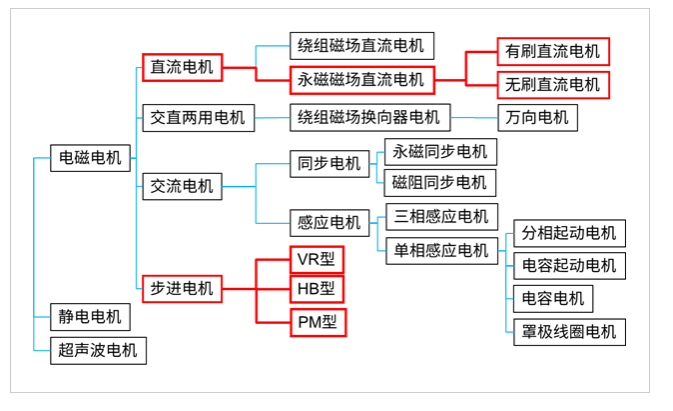
What is a Brushed DC Motor?
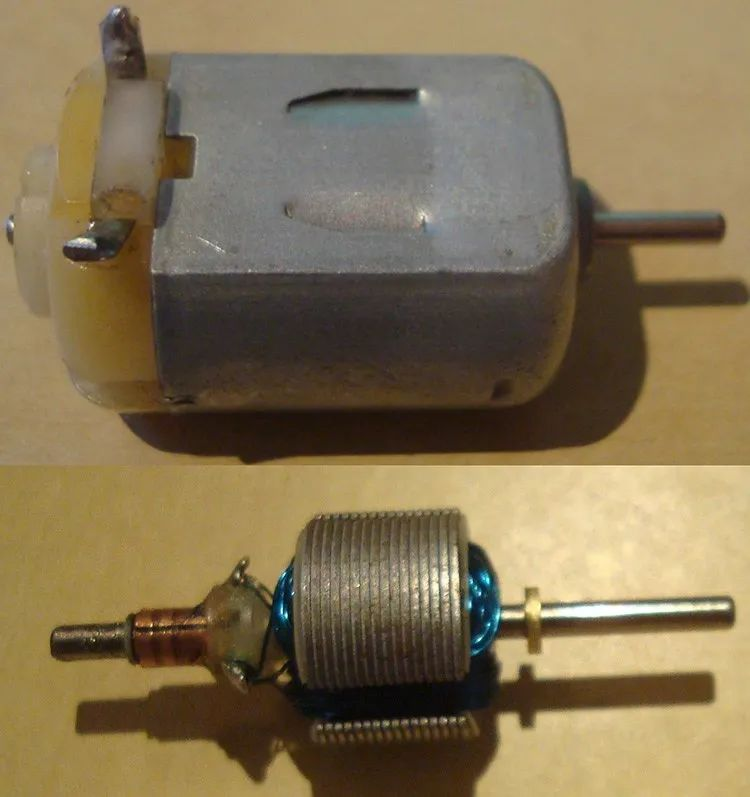
A brushed DC motor is a simple and easy-to-use motor that does not need to prepare a special electronic circuit to drive it, and can rotate as long as it is connected to a power source such as a dry battery. Due to its ease of use and low price, it has become the most frequently used motor in electronic production.
It can also adjust the speed of rotation, set the direction of rotation, control braking, etc. through PWM or a control IC called a "motor driver", so it is also widely used in applications such as radio controllers and fans.
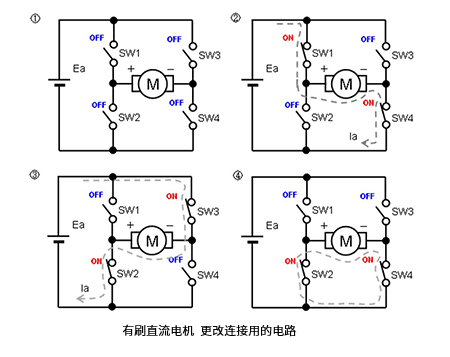
The picture shows a typical control method of a brushed DC motor - "H bridge circuit". The motor ①free/②forward rotation/③reverse rotation/④brake can be operated by ON/OFF of four switches (actually transistors or FETs).
While this motor has the advantage of ease of use, it also has some disadvantages. Brushed DC motors have contact bodies called "brushes" inside, and if the brushes are severely worn due to the friction caused by rotation, the motor will become unusable. It's no problem to spin for a few hours, but with continued use the brushes wear down so badly that the entire motor needs to be replaced, and the motor can no longer be reused.
In addition, sparks generated by brushes in contact with the body are also one of the causes of noise, and in some cases, odors generated when brushed DC motors are running are also a big problem, so in some application scenarios, other options must be considered .
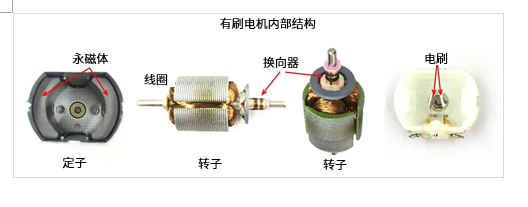
-
Advantages:
It can be rotated by electricity,
and the price is low.
-
Disadvantages
Problems caused by brushes (life, noise, odor, etc.)
▍What is a brushless DC motor?
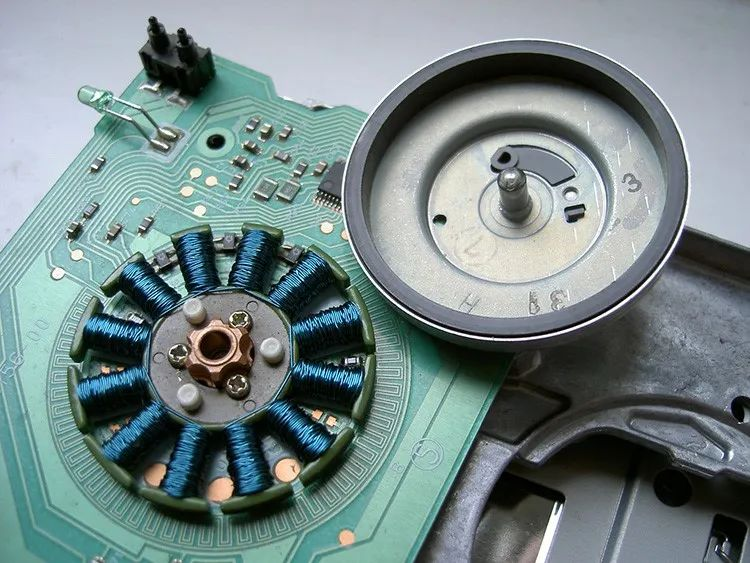
The electronic circuit that makes the motor rotate constantly monitors the angle of rotation of the rotor connected to the output shaft (crankshaft), and switches the energization of the coils at any time according to the angle. The role of the drive circuit is very important for the control of the brushless DC motor. The driving circuit of a brushless DC motor requires many electronic components, including position detection sensors, multiple power transistors and gate drivers, and a microcontroller to control them, so circuit design skills and software knowledge are required.
In recent years, more and more BLDC motors are equipped with microcontroller control ICs or microcontrollers with BLDC motor control functions, but in general, the operation of BLDC motors is still more complicated than that of brushed DC motors.
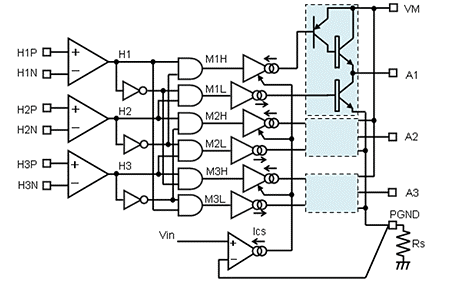
-
Advantages
Light weight, long life, good motor efficiency
-
Disadvantages:
Expensive, complex drive circuit
▍What is a stepper motor?
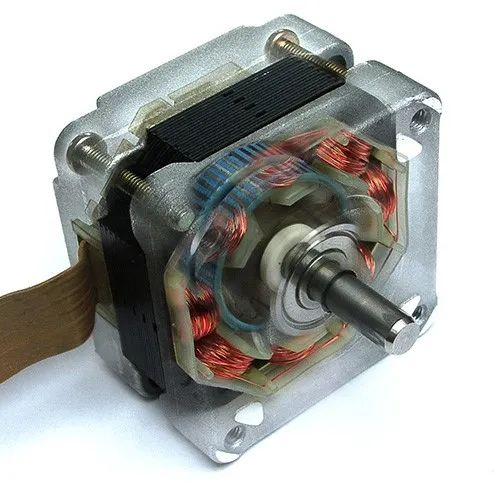
A "stepping motor" is a motor that can control the angle of rotation. The two motors described above are used as power sources for long-term continuous rotation, while stepper motors are mainly used for position control.
The characteristic of the stepper motor is that every time a pulse signal is applied, the output shaft rotates through a fixed angle. The angle at which each pulse signal is input is called "step angle". For example, if it is a stepper motor with a step angle of 1.8°, it will rotate once every 200 pulses, so it can be rotated by "applying 100 pulses to make it rotate half a circle" and "applying 1000 pulses per second to make it 5 revolutions per second" and so on, you can flexibly control its rotation speed, direction and stop position.
Since their holding torque acts even when the motor is stopped, stepper motors are also used in applications that require a fixed stop position.
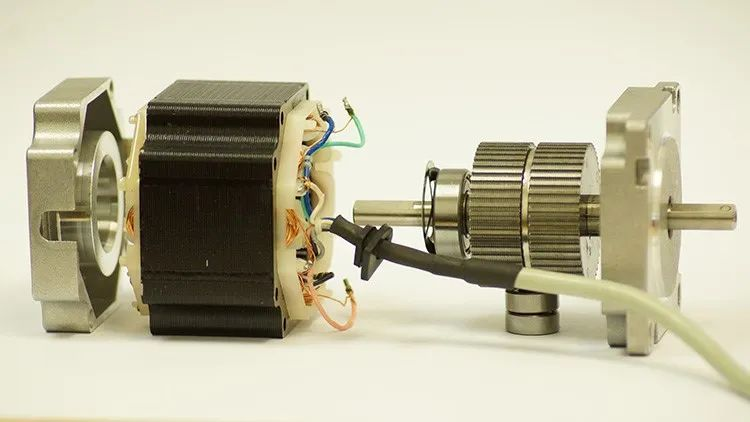
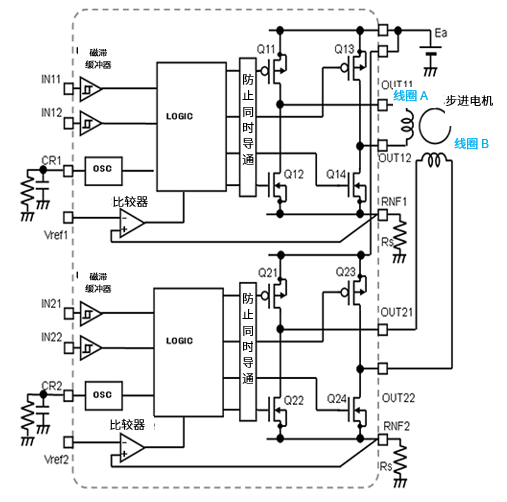
-
Advantages
Position control is easy
with holding torque
High reliability
-
Disadvantages
step-by-step rotation, so the movement is not smooth,
not suitable for long-term continuous rotation and high-speed rotation



























 XINDA
XINDA